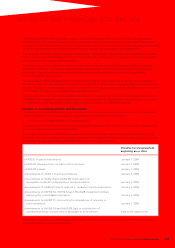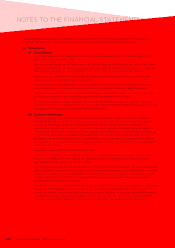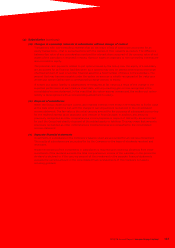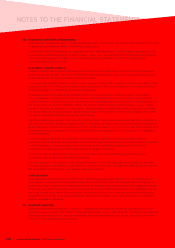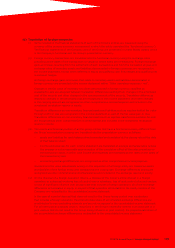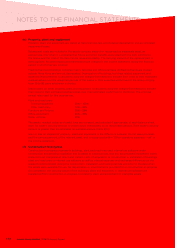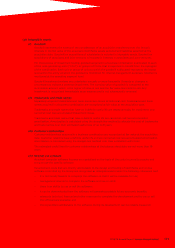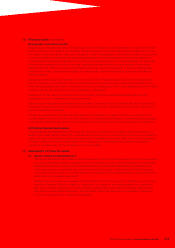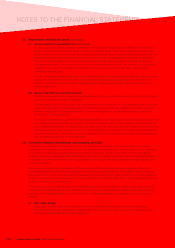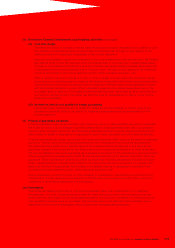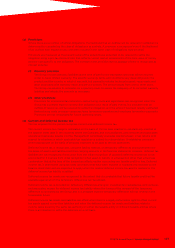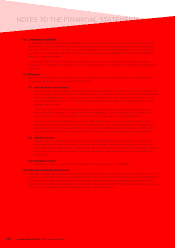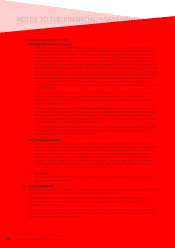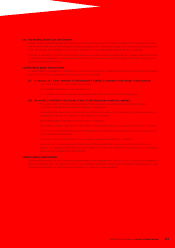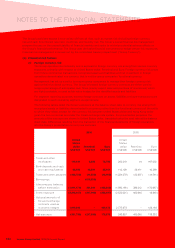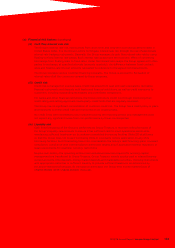Lenovo 2016 Annual Report Download - page 176
Download and view the complete annual report
Please find page 176 of the 2016 Lenovo annual report below. You can navigate through the pages in the report by either clicking on the pages listed below, or by using the keyword search tool below to find specific information within the annual report.
174 Lenovo Group Limited 2015/16 Annual Report
NOTES TO THE FINANCIAL STATEMENTS
2 SIGNIFICANT ACCOUNTING POLICIES (continued)
(j) Impairment of financial assets (continued)
(i) Assets carried at amortized cost (continued)
For loans and receivables category, the amount of the loss is measured as the difference between the
asset’s carrying amount and the present value of estimated future cash flows (excluding future credit
losses that have not been incurred) discounted at the financial asset’s original effective interest rate. The
asset’s carrying amount is reduced and the amount of the loss is recognized in the income statement.
If a loan or held-to-maturity investment has a variable interest rate, the discount rate for measuring
any impairment loss is the current effective interest rate determined under the contract. As a practical
expedient, the Group may measure impairment on the basis of an instrument’s fair value using an
observable market price.
If, in a subsequent period, the amount of the impairment loss decreases and the decrease can be related
objectively to an event occurring after the impairment was recognized (such as improvement in the
debtor’s credit rating), the reversal of the previously recognized impairment loss is recognized in the
income statement.
(ii) Assets classified as available-for-sale
The Group assesses at each balance sheet date whether there is objective evidence that a financial asset
or a group of financial assets is impaired.
For debt securities, the Group uses the criteria referred to in (i) above. If, in a subsequent period, the fair
value of a debt instrument increases and the increase can be objectively related to an event occurring
after the impairment loss was recognized in the income statement, the impairment loss is reversed
through the income statement.
For equity investments, a significant or prolonged decline in the fair value of the security below its cost is
also evidence that the assets are impaired. If any such evidence exists, the cumulative losses, measured
as the difference between the acquisition cost and the current fair value, less any impairment loss on that
financial asset previously recognized in the income statement, is removed from equity and recognized in
the income statement. Impairment losses recognized in the income statement on equity instruments are
not reversed through the income statement.
(k) Derivative financial instruments and hedging activities
Derivatives are initially recognized at fair value on the date a derivative contract is entered into and are
subsequently re-measured at their fair values. The method of recognizing the resulting gain or loss depends
on whether the derivative is designated as a hedging instrument, and if so, the nature of the item being
hedged. The Group designates certain derivatives as either: (i) hedges of the fair value of recognized assets
or liabilities or a firm commitment (fair value hedge) or (ii) hedges of highly probable forecast transactions
(cash flow hedges).
The Group documents at the inception of the transaction the relationship between hedging instruments
and hedged items, as well as its risk management objectives and strategy for undertaking various hedging
transactions. The Group also documents its assessment, both at hedge inception and on an ongoing basis, of
whether the derivatives that are used in hedging transactions are highly effective in offsetting changes in fair
values or cash flows of hedged items.
The full fair value of a hedging derivative is classified as a non-current asset or liability when the remaining
maturity of the hedged item is more than 12 months, and as a current asset or liability when the remaining
maturity of the hedged item is less than 12 months. Trading derivatives are classified as a current asset or
liability.
(i) Fair value hedge
Changes in the fair value of derivatives that are designated and qualified as fair value hedges are
recorded in the income statement, together with any changes in the fair value of the hedged asset or
liability that are attributable to the hedged risk.



